Geological and bioregional assessments – enabling future tight, shale and deep coal gas development – Cooper Basin case study
David Robinson A , Merrie-Ellen Gunning A D , Tim Evans A , Lisa Hall A , Baskaran Sundaram A , Anthony Swirepik B , Andrew Stacey B , Rodney Dann B and Kate Holland CA Geoscience Australia, GPO Box 378, Canberra, ACT 2601, Australia.
B Department of the Environment and Energy, GPO Box 787, Canberra, ACT 2601, Australia.
C Commonwealth Scientific and Industrial Research Organisation (CSIRO), Waite Campus, Waite Road, Urrbrae SA 5064, Australia.
D Corresponding author. Email: merrie-ellen.gunning@ga.gov.au
The APPEA Journal 59(2) 946-951 https://doi.org/10.1071/AJ18165
Accepted: 4 April 2019 Published: 17 June 2019
Abstract
The Australian Government’s Geological and Bioregional Assessment (GBA) Program is a series of independent scientific studies conducted by Geoscience Australia and CSIRO, supported by the Bureau of Meteorology and managed by the Department of the Environment and Energy. These studies focus on the Cooper, Isa and Beetaloo GBA regions, all of which include basins which are prospective, but under-explored, for shale, tight and/or deep coal gas. The GBA Program seeks to expedite development in order to bring new gas resources to the east coast gas market within the next 5–10 years through increased understanding of the potential environmental impacts posed by gas development and increasing the efficiency of assessment, monitoring and ongoing regulation, including improved data capture and reporting. This multi-agency program addresses the potential environmental impacts of gas development through geological and environmental baseline assessments and identification of major information gaps (Stage 2), followed by an analysis of the potential impacts on assets, including groundwater, surface water, environmental and cultural assets as well as Commonwealth and State matters of environmental significance (Stage 3). This paper will discuss how integrated conceptual models of the geology and hydrogeology of selected unconventional petroleum resources can be utilised by industry, regulators and other stakeholders. By establishing a baseline assessment for the Cooper Basin, which includes an integrated shale, tight and deep coal prospectivity and groundwater study, future development scenarios can be envisaged and the potential impact on groundwater and other resources contemplated. Similar baseline assessments and conceptual models are being developed for the Isa and Beetaloo GBA regions.
Keywords: bioregion, east coast gas market, environmental baseline assessment, Eromanga Basin, Eyre Basin, groundwater, shale gas, tight gas.
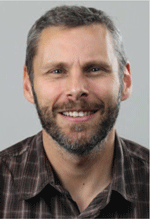
In December 2018, Dr David Robinson was appointed Branch Head of the Energy Systems Branch. David has worked with Geoscience Australia since 2001 in a variety of roles across the agency. During the first phase of his career he worked as a hazard and risk modelling specialist, helping to modernise Geoscience Australia’s approach to earthquake hazard and risk assessment. This was followed by a period as Chief Scientist of Geoscience Australia’s Indonesian program, DMInnovation, where he led an integrated effort to increase the use of science and technology in Indonesian disaster management and deliver tangible changes to policies and actions across multiple Indonesian Government agencies. Recently, David moved to the Mineral Systems Branch where he has worked across a range of projects that focussed on the use of modelling and geophysics in understanding minerals systems, and he has undertaken two extended periods as acting Branch Head. David has a Ph.D. in Seismology from the Research School of Earth Sciences, ANU, and a Bachelor’s Degree in mathematics and geophysics from Flinders University of South Australia. |
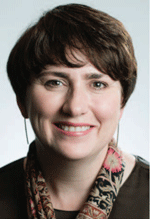
Merrie-Ellen Gunning has over 20 years of experience in the oil and gas industry where she has performed a diverse range of roles from strategic planning, business development and operations management, to technical roles specialising in geophysics and exploration. Added to this is five years of experience in the aluminium industry across the value chain from extraction, mining bauxite and nepheline, through refining Alumina to smelting. In addition to her extensive knowledge of industry in Australia, her experience has included postings to Indonesia, Norway, the US, Russia and Singapore and overseeing operations across the world. She has an MBA from Melbourne Business School and a Bachelor of Applied Science in Geology. Merrie-Ellen joined Geoscience Australia in August 2015 and has worked on a wide range of prospectivity and CO2 storage projects, leading the Energy Systems Branch throughout 2017, and is currently acting Section Leader for Energy Frontiers. |

As a Senior Hydrogeologist at Geoscience Australia, Tim Evans is currently involved with the Geological Bioregional Assessments. He holds an MSc in hydrogeology and groundwater management from the University of Technology, Sydney, as well as Bachelor of Applied Science in Geology. Prior to joining Geoscience Australia in 2013, Tim worked as a consultant geologist and hydrogeologist in the private sector on a broad range of projects, including investigations into groundwater systems and management approaches, as well as the exploration and appraisal of minerals, coal seam gas and geothermal energy resources. |

Dr Lisa Hall is a Senior Research Scientist at Geoscience Australia within the Energy Systems Group of Resources Division. Her current research is focussed on hydrocarbon prospectivity assessments and petroleum systems modelling in a variety of Australian basins. Lisa holds an MSc in Geology and Geophysics from Cambridge University (1999) and a DPhil in Structural Geology and Neotectonics from Oxford University (2003). Lisa is a member of PESA. |
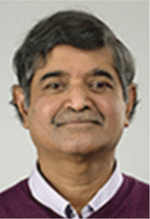
Dr Baskaran Sundaram is currently the Director of the Regional Groundwater Section at Geoscience Australia. He has research background in hydrogeology and extensive experience in developing and delivering complex, multidisciplinary work programs designed to improve understanding of groundwater systems, groundwater-surface water connectivity and other natural resource management issues across several government agencies. |
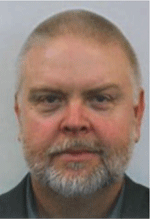
Anthony Swirepik is the Director of the GBA Program in the Department of the Environment and Energy. He has considerable experience in working at the interface between government policy, programs and science to deliver information to decision makers across government, industry and the community. In the three years before working on the GBA Program, Anthony was Director of the Bioregional Assessment Program, managed the Office of Water Science Research Program and managed the delivery of the Independent Review of the Bund Wall at the Port of Gladstone. Anthony has a strong interest in the science of climate change, having managed the Australian Climate Change Science Program and coordinated Australia’s contribution to the IPCC Fifth Assessment report. An ecologist by training, his early career was with CSIRO, which focussed on weed biological control, working on temperate pasture weeds, such as Peterson’s curse, and environmental weeds, such as Bitou bush. |
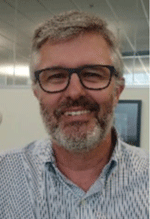
Dr Andrew Stacey is a Senior Project Officer in the GBA Program in the Department of the Environment and Energy. He is a petroleum geologist ‘by trade’, with over 15 years of experience in academia and government. Prior to joining the department, he worked for the Geological Survey of Victoria and for Geoscience Australia in several technical, advisory and managerial roles, working extensively on the basins of Australia’s southern margin as well as in the unconventional hydrocarbon potential of Australia’s onshore basins. Andrew holds a Ph.D. from the University of Tasmania and an Honours degree in Geology from the University of Technology, Sydney. He is a member of AAPG, SPE and the Australian Institute of Energy. |
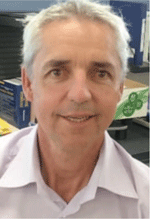
Dr Rod Dann is the Assistant Director of the GBA Program in the Department of the Environment and Energy. He is a hydrogeologist, with experience working in groundwater research, consulting (contaminated-site assessment and remediation), government water policy and technical advice. Prior to working with the GBA Program, Rod worked in the Office of Water Science, supporting the work of Independent Expert Scientific Committee and has also worked at the National Water Commission. Rod has a Ph.D. (hydrogeology) from the Australian National University, Engineering Masters degree (groundwater) from UNSW and an honours degree in geology from University of Canberra. |

Dr Kate Holland joined CSIRO as an Ecohydrologist in 2004 and is currently the Cooper Basin and CSIRO Project Leader for the GBA Program. In this role, she leads a multi-partner (with Geoscience Australia and Bureau of Meteorology), multidisciplinary team (geology, hydrogeology, hydrology, water quality, ecology and impact analysis) that will provide independent, evidence-based information to support policy makers, communities, gas companies and regulators to make decisions about future shale and tight gas development. Her previous high profile roles include Project Leader for the Maranoa-Balonne-Condamine sub-region in the GBA Program, where she assessed the cumulative impacts of coal resource development (coal seam gas and open-cut coal mining) in the sub-region. In her previous roles, Kate’s multidisciplinary knowledge improved communication between disciplines and bridged the science-policy divide. Kate has authored (or coauthored) 17 scientific journal publications, including a review of groundwater-surface water interactions in arid/semiarid wetlands. |
References
Goldstein, B., Menpes, S., Hill, A., Wickham, A., Alexander, E., Jarosz, M., Pepicelli, D., Malavazos, M., Staritski, K., Taliangis, P., Coda, J., Hill, D., and Webb, M. (2012). Roadmap for Unconventional Gas Projects in South Australia. Department for Manufacturing, Innovation, Trade, Resources and Energy, Adelaide. Available at http://www.energymining.sa.gov.au/__data/assets/pdf_file/0019/238033/Roadmap_Unconventional_Gas_Projects_SA_12-12-12_web.pdf [verified 7 May 2019]Hall, L. S., Hill, A. J., Troup, A., Korsch, R. J., Radke, B., Nicoll, R. S., Palu, T. J., Wang, L., and Stacey, A. (2015a). Cooper Basin Architecture and Lithofacies: Regional Hydrocarbon Prospectivity of the Cooper Basin, Part 1. Geoscience Australia Record 2015/31. Geoscience Australia, Canberra. Available at https://d28rz98at9flks.cloudfront.net/87832/Rec2015_031.pdf [verified 7 May 2019]
Hall, L. S., Hill, A. J., Wang, L., Kuske, T., Edwards, D. S., Troup, A., and Boreham, C. J. (2015b). Unconventional Gas Prospectivity of the Cooper Basin. The APPEA Journal 55, 428.
| Unconventional Gas Prospectivity of the Cooper Basin.Crossref | GoogleScholarGoogle Scholar |
Hall, L. S., Boreham, C. J., Edwards, D. S., Palu, T. J., Buckler, T., Hill, A. J., and Troup, A. (2016). Cooper Basin Source Rock Geochemistry: Regional Hydrocarbon Prospectivity of the Cooper Basin, Part 2. Geoscience Australia Record 2016/06. Geoscience Australia, Canberra. Available at https://d28rz98at9flks.cloudfront.net/87833/Rec2016_006.pdf [verified 7 May 2019]
Hall, L., Buchanan, S., Totterdell, J., Lai, E., Langford, R., Sundaram, B., Ransley, T., Glenn, K., Heugh, A., Inskeep, C., Zhu, R., Lech, M., Skeers, N., and Stewart, G. (2018). Rapid Regional Prioritisation for Tight and Shale Gas Potential of Eastern and Northern Australian Basins. Geological and Bioregional Assessments Program: Stage 1. Prepared for the Department of the Environment and Energy by Geoscience Australia, Canberra. Available at https://www.bioregionalassessments.gov.au/sites/default/files/gba_stage1_report_final_0.pdf [verified 7 May 2019]
Ransley, T. R., and Smerdon, B. D. (2012). Hydrostratigraphy, Hydrogeology and System Conceptualisation of the Great Artesian Basin. A Technical Report to the Australian Government from the Csiro Great Artesian Basin Water Resource Assessment. CSIRO, Canberra. Available at https://publications.csiro.au/rpr/download?pid=csiro:EP132693&dsid=DS5 [verified 7 May 2019]
Ransley, T. R., Radke, B. M., Feitz, A. J., Kellett, J. R., Owens, R., Bell, J., Stewart, G., and Carey, H. (2015). Hydrogeological Atlas of the Great Artesian Basin. Geoscience Australia, Canberra.
Swirepik, A., Stacey, A., and Dann, R. (2018). An Overview of the New Geological and Bioregional Assessments Program. The APPEA Journal 58, 625–629.
| An Overview of the New Geological and Bioregional Assessments Program.Crossref | GoogleScholarGoogle Scholar |


